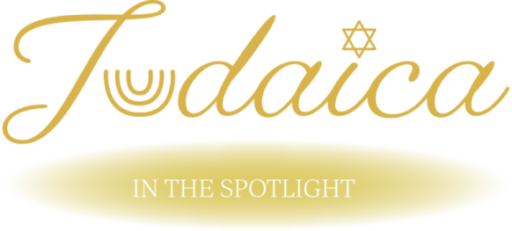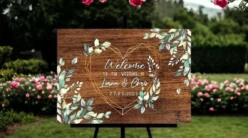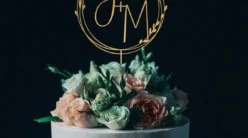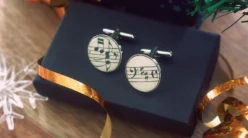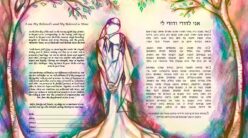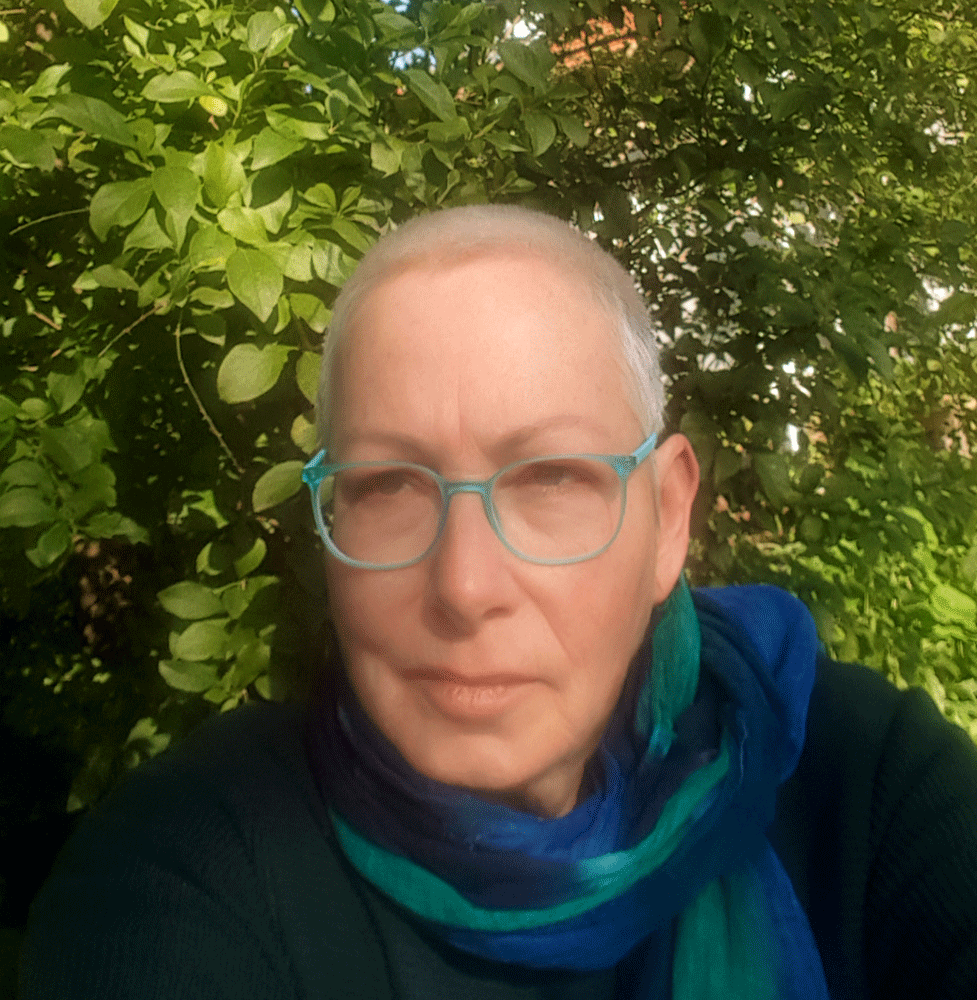
As a child in Pardes Hanna, Israel, my upbringing was aspiring to an academic career. I moved to Jerusalem straight out of the army, and took a long time realizing that university was not for me. I have always been good with my hands, sewing clothes, knitting, weaving Kilim, doing some carpentry and making toys. I went to the Bezalel Academy of Arts and Design, wrong address again.
When my eldest (out of three) was 14, I made a papercut illustration for an essay she wrote on the subject for school. I never cut paper before, and I instantly fell in love with it.
Still, I went on to learn some holistic therapy. It was during those studies that I made the acquaintance of a scribe and started cooperating with him on parchment scrolls of the Book of Esther. He wrote, I illustrated with cutting, painting and gold leaf, and the scrolls sold! This was the turning point. Back in my hometown, I was working as a therapist and moonlighting as a Judaica papercut artist, but with the years the weight shifted, till, about 20 years ago I had the courage to make Judaica Art my full time occupation.My heart is in ketubah making. I work a lot, and in my leisure time I embroider and make quilts, cook, garden, and travel.
Tell us a little bit about yourself and your background.
I am a practical person, a “doer”; I am very fond of my independence, and would find a 9-5 job difficult. Being self-employed, I am highly motivated to do good work, give great service to customers, and design and make things.
What inspired you to become an artist?
There was the necessity to earn the keep of my children and myself, and there were things I could make that people would pay for. I worked as a dress maker taking custom orders for several years, which strengthened my trust in my ability to make a living from the skill of my hands. I have a great desire for beauty around me, and I found that the venue of Judaica Art could bring all the elements together.
In ketubah making, beauty serves to elevate and intensify the document of marital contract, the mutual commitment a couple takes on.
The ketubah is the only item that remains from the wedding ceremony, and it is on the wall to see and be reminded of, in good times and bad.
What is your specialty?
Papercutting. For many years I also painted, and did calligraphy and gold leaf. I created many originals on parchments, ketubahs, verses, whole scrolls. There were a few parchment scrolls of the Song of Songs, different takes on its themes, and many large custom pieces. Paper cutting was always in them.
In Papercutting, I designed dozens of papercut ketubahs, which at first I cut by hand in parchment, and later began to produce in paper by laser cutting.Papercutting is a binary art. You think in matter vs. hole. You can choose to work “positive” or “negative”: “Positive” design will show the shapes by cutting out the spaces between them. The “negative” way you cut out the shapes and leave the background, or base paper. In both ways, your paper remains in one piece, everything needs to stay connected, so that pieces don’t fall off. It is challenging to combine the two approaches in one piece. Then, of course, you can work in layers, each showing through the one (or several) above it. You can add gold, or bring in color by using shaded paper or by painting the papercut. Foils can be pressed into the holes from underneath to shine like gems for special accents.
Papercutting is an art of many small details. One’s breath would be taken away at a piece full of intricate cutting that leaves delicate lines of paper, rather than at large, minimalistic designs. Its beauty is in the riches of visual constructions, in symmetries (never perfect! Imperfection makes it so much more interesting), and in good craftsmanship.
I seem to connect strongly with patient work of much detail. The kind of arts, or crafts, done by women through the ages in many countries and considered “ethnic”, belonging in a lost world, now given up for easy, instant, purchasable ornamentation. I do the same in my quilting and in my embroidery, and I have pieces that took months and years to make.
I do not sell my quilts and embroidery, but give them as gifts to family members and to close friends. The thought behind it being, that this is how I would like to be remembered when I’m gone.
Are you pursuing any themes?
My love for rich detail must have played a part in my becoming captured by the Lisbon workshop. A significant part of my work is in the style of the Lisbon Judaic Manuscript Workshop, which flourished at the end of the fifteenth century, a workshop which produced the famous Lisbon Bible and many other magnificent illuminated manuscripts.
The art of this workshop was the culmination of an ornamental style that had been developing in Spain and Portugal in the fourteenth and fifteenth centuries, only to come to an abrupt end with the expulsion of the Jews from these lands.
I took on to preserve and continue their style, adding my own art into it, and interpreting it in my personal way. In keeping with this tradition, micrography, or miniature decorative writing, is used along with decorative calligraphy around the main text, sometimes creating shapes and borders. Delicate floral decoration covers areas and forms borders, with gold touches and cut-out, in typical, intricate combinations.
This aspect of my work was manifested in the design of my Women’s Prayer book, Hadara, a collection of 28 prayers, each illuminated differently, with calligraphy by Sharon Binder. Work on this book took 6 years and much help from wonderful people; it was first printed as a limited edition in 2008, and then as a commercial edition by Koren Publishers in Jerusalem, under the title In Her Voice.
How and where do you work?
I work from home, where I have a large study with my computer and work tables, sewing machine, lots of shelves and a great window overlooking the garden. My day is long, and I switch from computer work to hand work, from concentrated design hours to technical jobs such as cutting, taping and applying gold or silver, and also to customer service correspondence and to packaging and office work. It is good to be able to work sometimes from before sunrise, or take days off when I want to. I have yet to leave a job undone or let down a customer.
What is the most indispensable item in your studio?
My knives and cutting boards, my reisfeder (it’s a relic… a technical drawing nib, that was originally used to draw ink circles as a compass add-on), my computer.
Where do you take your inspiration?
Much comes from nature, like the trees I love (and plant), much is derived from traditional Judaica art or from beautiful places I have visited. Of course, as already mentioned, there is the work of the Lisbon Workshop, especially the Lisbon Bible. Sometimes a beautiful object can make a new idea flash… But it is always much work developing an idea. I have to be patient and allow ideas to brew in my head. A design can get stuck, and I come back to it after a day or more with a fresh eye and mind to carry on.
Where can we find your work?
My website
My Facebook business page
Agents: the most outstanding of which are the indispensable, wise and kind, Mrs. Bleema Posner of Englewood, NJ, and Mrs. Gail Kaplan, a wonderful person, many faceted artist and a pillar of her community, from Farmington Hills, Michigan.
In Jerusalem, the Luvaton Gallery in the David Citadel Hotel.
My ketubahs sell through several websites:
Ketubah Company, of Toronto, Canada, which has over 80 exclusive designs of my ketubahs.
National Museum of American Jewish History, Philadelphia, PA,
Shalom House fine Judaica in Los Angeles, CA
CBL Fine Art, West Orange, NJ
Judaica Collection, Boston, MA
Judaic Connection, Fort Lauderdale, FL

© Enya Keshet 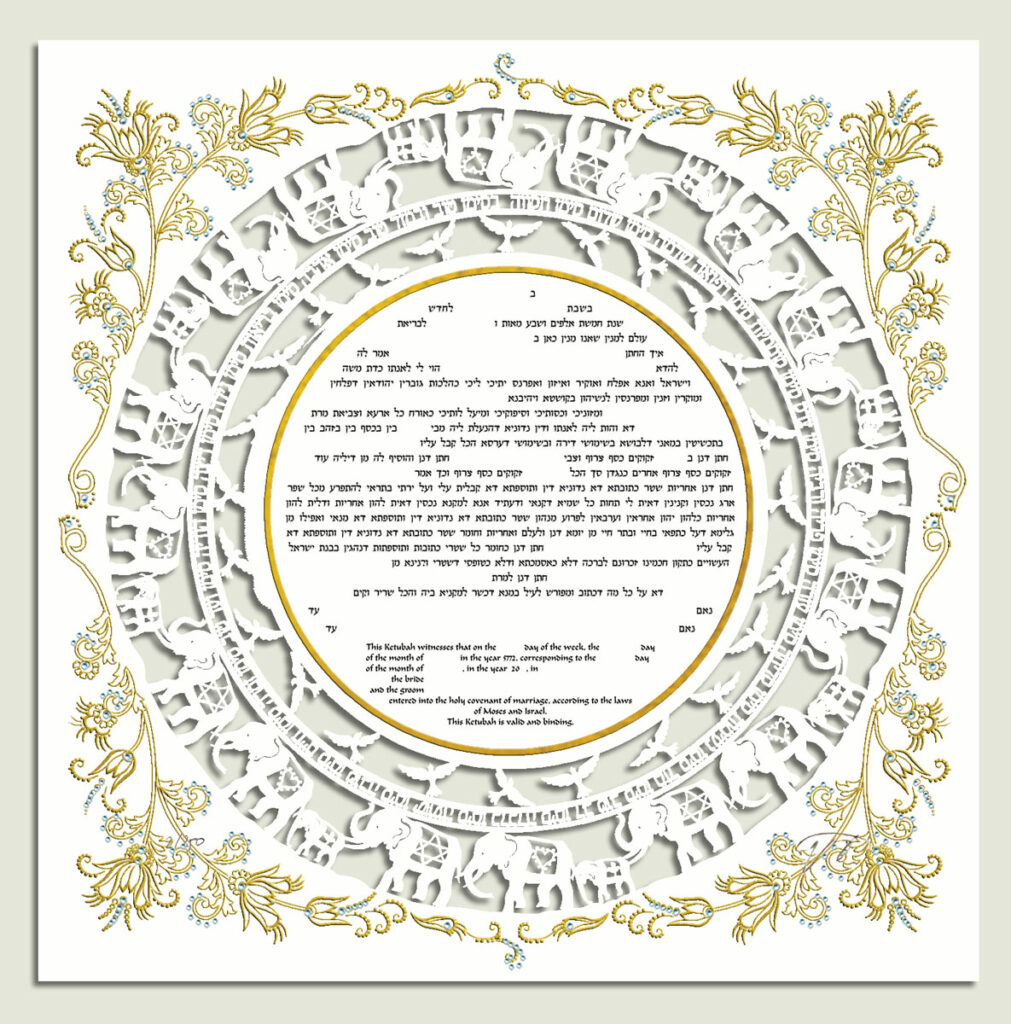
© Enya Keshet 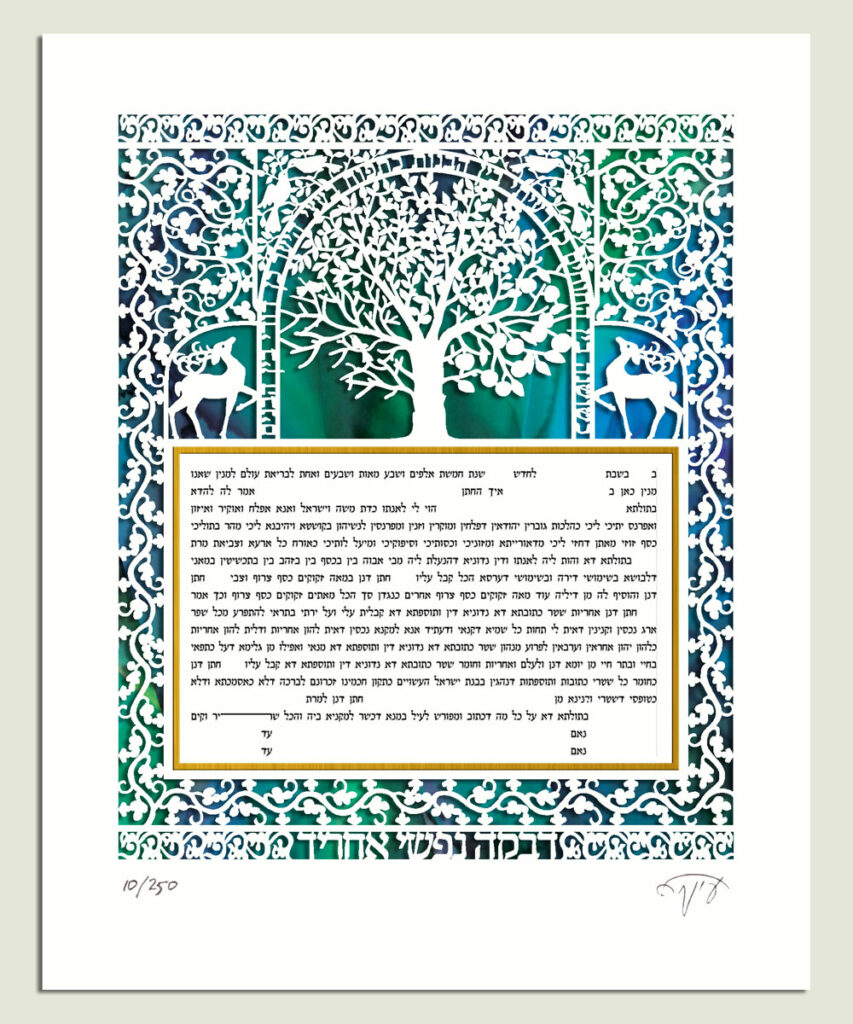
© Enya Keshet 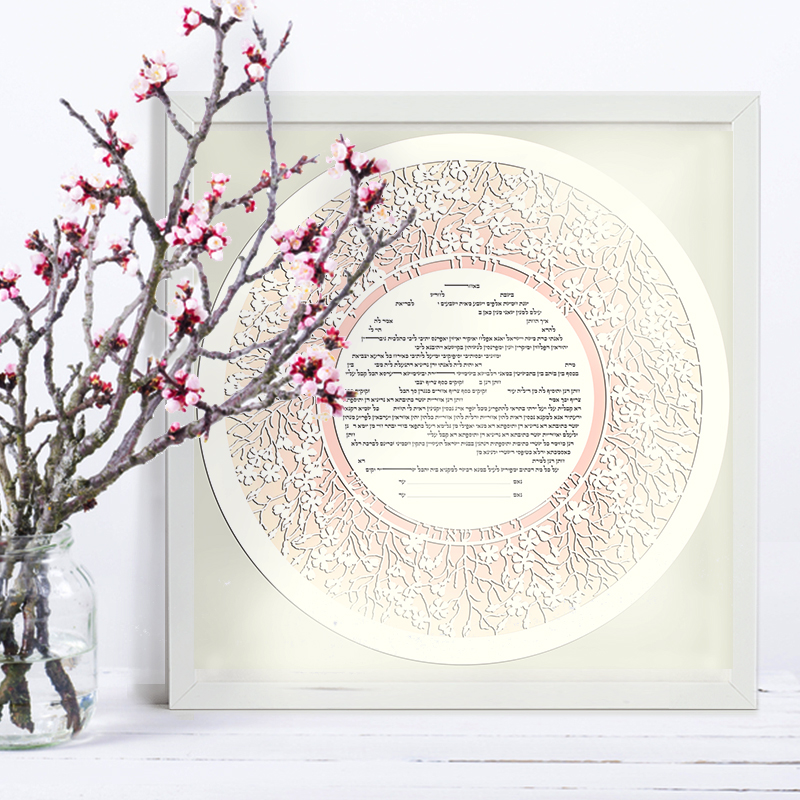
© Enya Keshet
